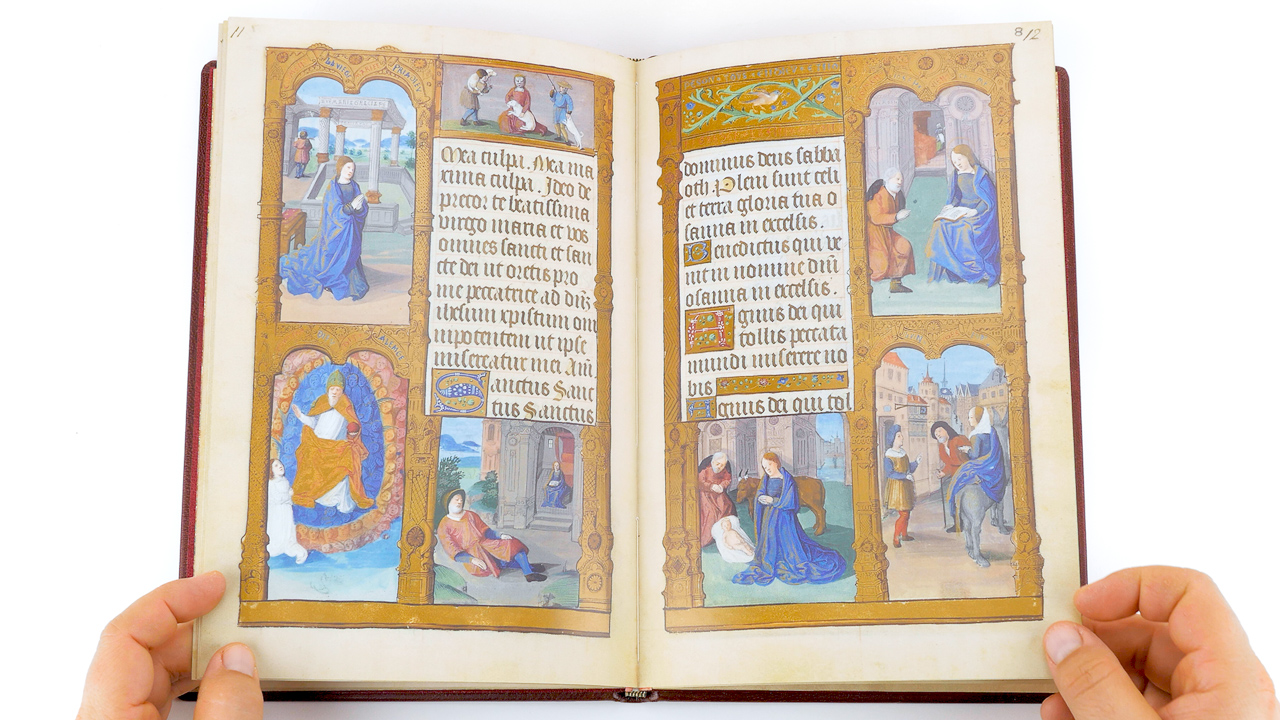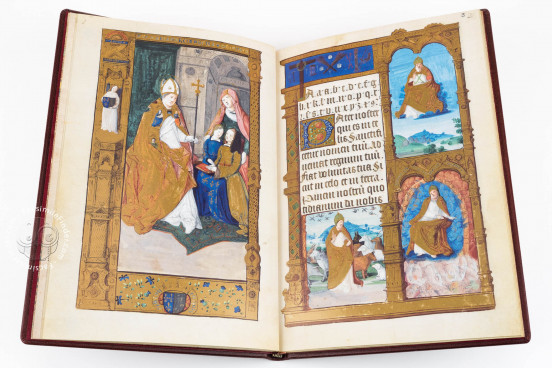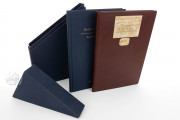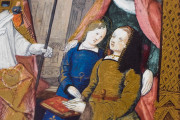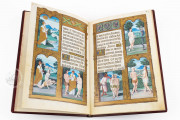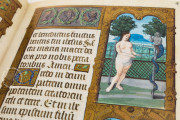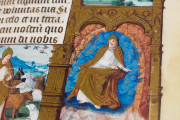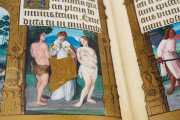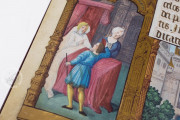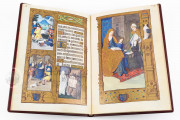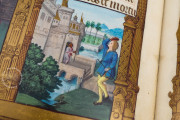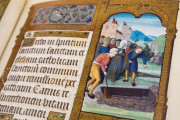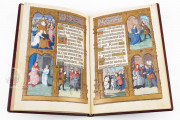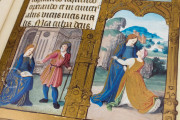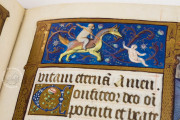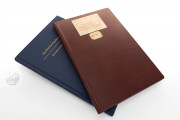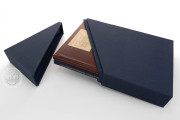The Primer of Claude of France is a richly illuminated book created to serve in the education of Claude, the young daughter of Anne of Brittany, Queen of France, who commissioned it. It was probably made around 1505 at Romorantin in the Loire Valley, where the court was resident. The book is dominated by its imagery, painted by the Master of Antoine de Roche. The book opens and closes with full-page miniatures. These two large paintings bookend the twelve text pages, each featuring three narrative scenes within an elaborate painted architecture embellished with motifs inspired mainly by ancient Roman art.
The text of Claude's primer—a "first book" for learning to read and an introduction to the Christian faith—begins with an alphabet, followed by prayers and a profession of faith. The princess could thus progress from learning her letters to learning words while simultaneously encountering aspects of her religion and being further educated by colorful pictures.
Master of Antoine de Roche
The book's illuminator has been identified on the basis of his loose brushwork and distinctive painted architectural surrounds, High Renaissance in style and shimmering with gold details. He is named for his illumination of a missal for the grand prior of Cluny, Antoine de Roche, around 1500 (Paris, Bibliothèque nationale de France, MS lat. 881). It has been suggested but not widely accepted that he was Guido Mazzoni, an Italian sculptor known to have been active at the French court.
Two Presentation Miniatures
The book opens with a miniature depicting Saint Anne presenting her daughter, the Virgin Mary, and the young Claude to Saint Claude, the princess's seventh-century namesake (fol. 2v). Saint Claude, clad in an elaborately embroidered bishop's cope, extends his hand in a gesture of blessing. The manuscript closes with another presentation: the princess consulting her book and protected by the bishop saint before Saint Anne, who teaches the Virgin to read (fol. 9r).
Biblical and Extra-Biblical Subjects
The sequence of smaller miniatures begins with scenes from Creation and the early history of humanity, some based on the account related in the Bible and some relying on stories enacted on the sixteenth-century stage (fols. 3r-5r). The narrative scenes continue with biblical and extra-biblical episodes surrounding the Virgin's marriage and the infancy of Christ and end with the personification of Peace comforting souls in Limbo (fols. 5v-8v).
Inscriptions in Middle French
The main Latin text is written in a regular and spacious Gothic Textualis script. French-language inscriptions identify the subjects of the miniatures in red and blue display script on the painted architecture, apparently the work of the illuminator. Flaws in the French have led some to suggest that the illuminator may not have been a French speaker.
Long a Treasure of the Fitzwilliam Museum
The primer was one of the manuscripts bequeathed in 1816 to the University of Cambridge by Richard Fitzwilliam (1745-1816), Viscount Fitzwilliam, to form the foundation collection of the Fitzwilliam Museum. The binding of red leather over wooden boards dates from the eighteenth century.
We have 1 facsimile edition of the manuscript "Primer of Claude of France": Die Fibel der Claude de France facsimile edition, published by Quaternio Verlag Luzern, 2012
Request Info / Price
